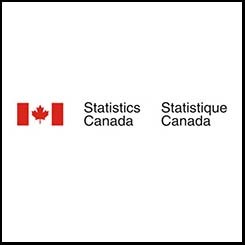Between 2011 and 2016 Yorkton experienced moderate growth according to the first release of the latest census data. During that period, the population grew by 674 people from 15,669 to 16,343, a rate of 4.3 per cent. That lagged behind the national rate of five per cent and Saskatchewan’s 6.3 per cent increase.
The population of the city expanded at the same rate as it did between the 2006 and 2011 censuses.
Mayor Bob Maloney noted it was good to see that kind of steady growth, but was skeptical of the overall numbers saying the health region has the population pegged closer to 20,000.
“I don’t think the census numbers necessarily reflect the reality,” he said. “It’s a bit of a concern because we only get funded based on the official numbers.”
On February 8, Statistics Canada (StatCan) reported Canada’s population increased from 33.5 million to 35.2 million. Population growth was most pronounced in the prairie provinces with Alberta leading the way at 11.6 per cent followed by Saskatchewan and Manitoba (5.8 per cent).
In Saskatchewan most of the growth was concentrated in and around Saskatoon. The city itself grew by 24,130 people, a 12.5 per cent increase third fastest in the country among large cities. Regina was fourth at 11.8 per cent. The craziest growth in the province, however, was in the Saskatoon bedroom communities of Warman and Martensville, which increased their populations by 55.1 and 25 per cent respectively.
Data on the demographics of the population increase for provinces and cities is not yet available, but StatCan did report two-thirds of the national increase was the result of net immigration. The overall fertility rate remained stable at 1.6 children per woman and accounted for the other one-third of the national population growth.
The higher rates in the prairies included a good degree of interprovincial migration from the east in addition to new immigration.
Anecdotally, Yorkton has experienced an influx of recent immigrants, mainly from the Philippines. It also appears there may be some rural-urban migration at play. While the city grew, regional numbers remained relatively static. The numbers for Division No. 9, Saskatchewan, which includes a 15,000 square-kilometre area including Otthon to the south, Sheho and Invermay to the west, Usherville to the north and the Manitoba border to the east, grew by only 0.9 per cent. Also, the population of the Yorkton-Melville federal electoral district actually decreased slightly by -0.3 per cent.
This first release of 2016 data also included information on private dwellings, which StatCan defines as “a separate set of living quarters with a private entrance either from outside the building or from a common hall, lobby, vestibule or stairway inside the building.”
The number of private dwellings in Yorkton increased at a slower pace than population with 7,394 in 2016 compared to 7,175 in 2011, or three per cent.
The increase in the number of dwellings occupied by usual residents was slightly lower still, growing by 2.8 per cent from 6,759 to 6,950. This was significantly lower than the national average of 5.6 per cent, an indication of a trend in more people living together, which may also be related to immigration.
Maloney suggested there might also be an economic component to an increase in average number of residents per dwelling.
“[Housing] is getting more and more expensive, even here in Yorkton,” he said.
Meanwhile, population density in Yorkton decreased dramatically during the intercensal period from 608.1 persons per square kilometre in 2011 to 449.9 in 2016, but that was skewed by the fact the geographic area of the city grew from 25.77 to 36.32 square kilometres due to annexations.
StatCan also reported that the response rate for the 2016 census was the highest ever at 98.4 per cent. The agency only identified 347 people who refused to fill out the form while the remainder of the 1.6 per cent non-compliance rate was due to people who could not be found or didn’t provide enough information to be properly counted.



